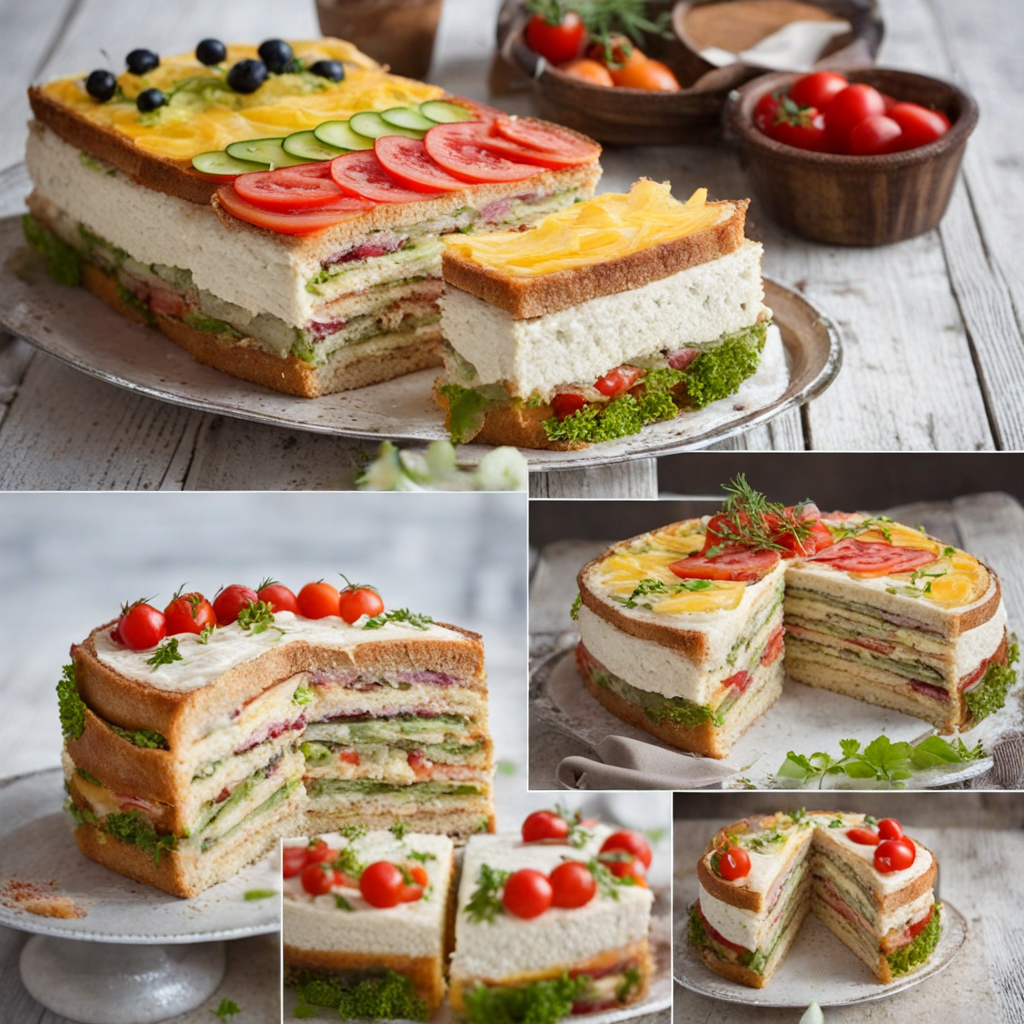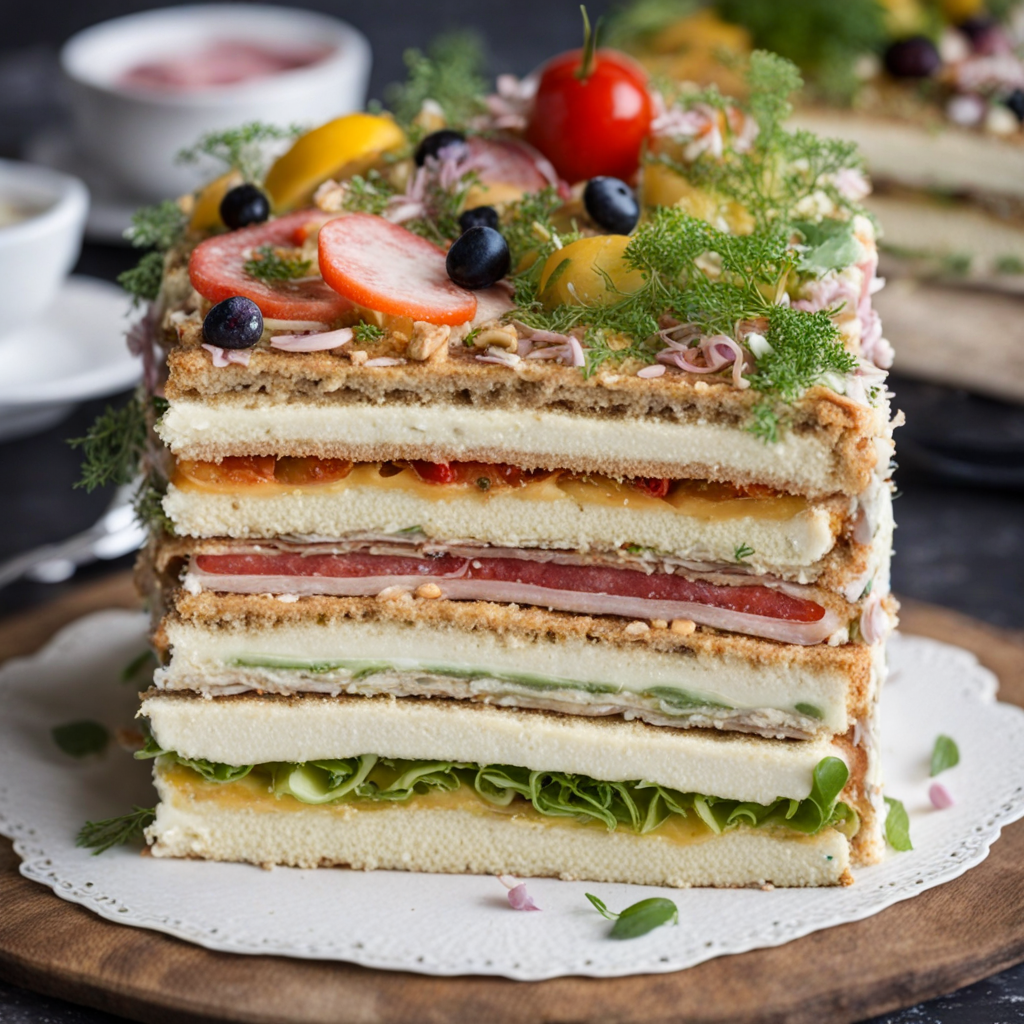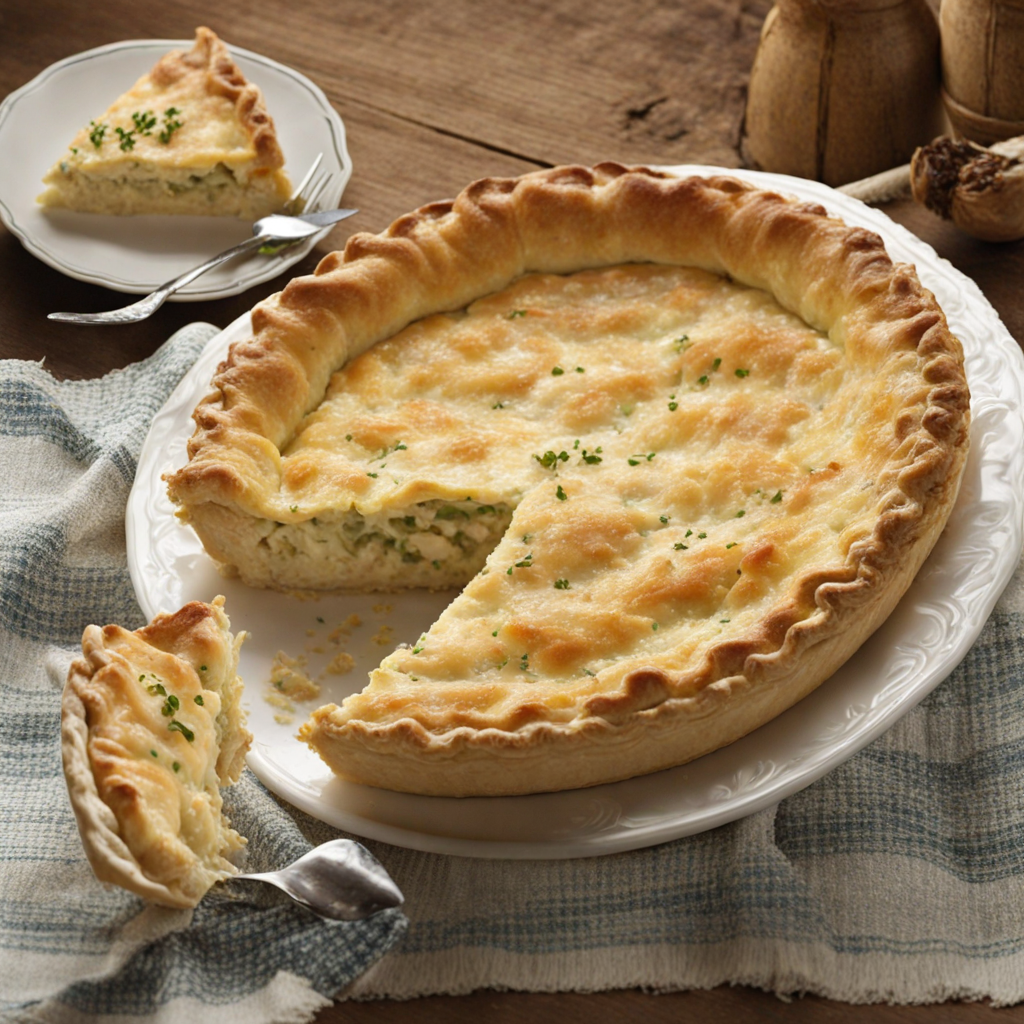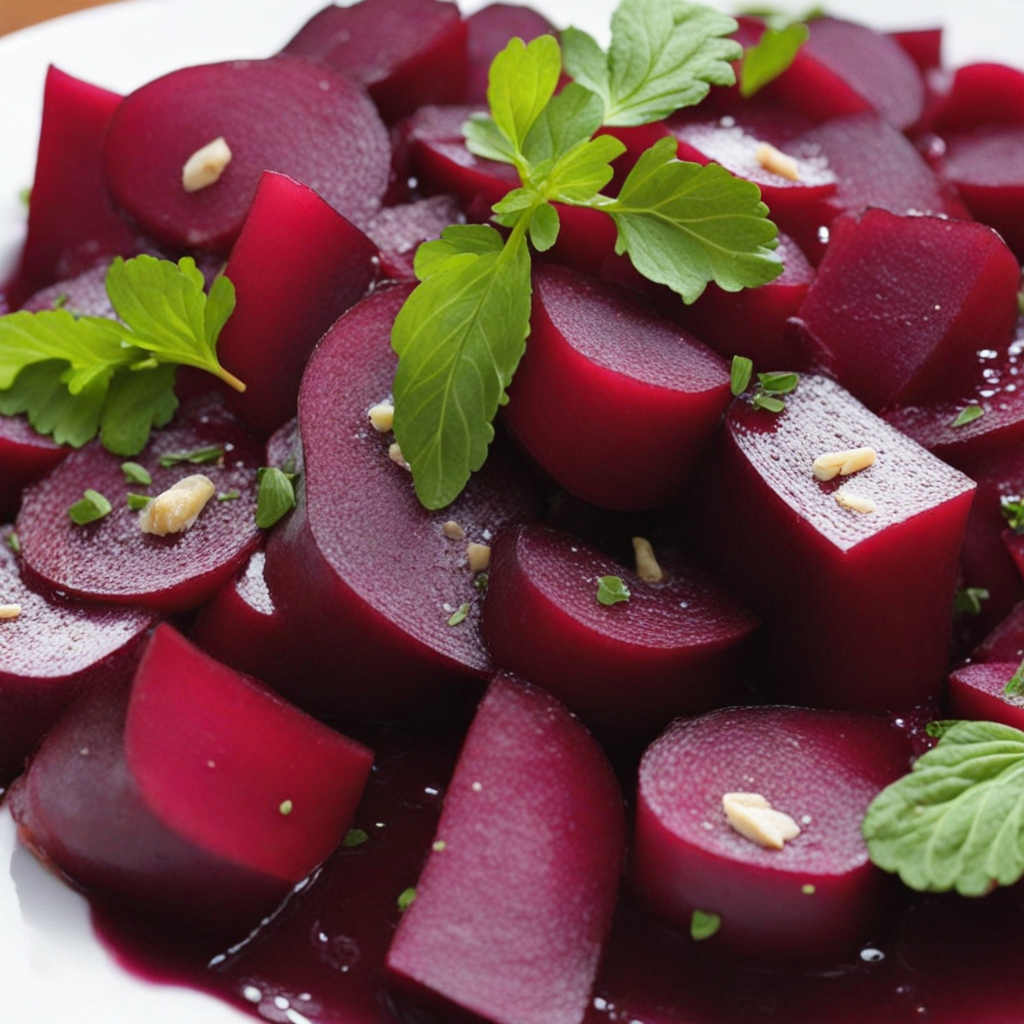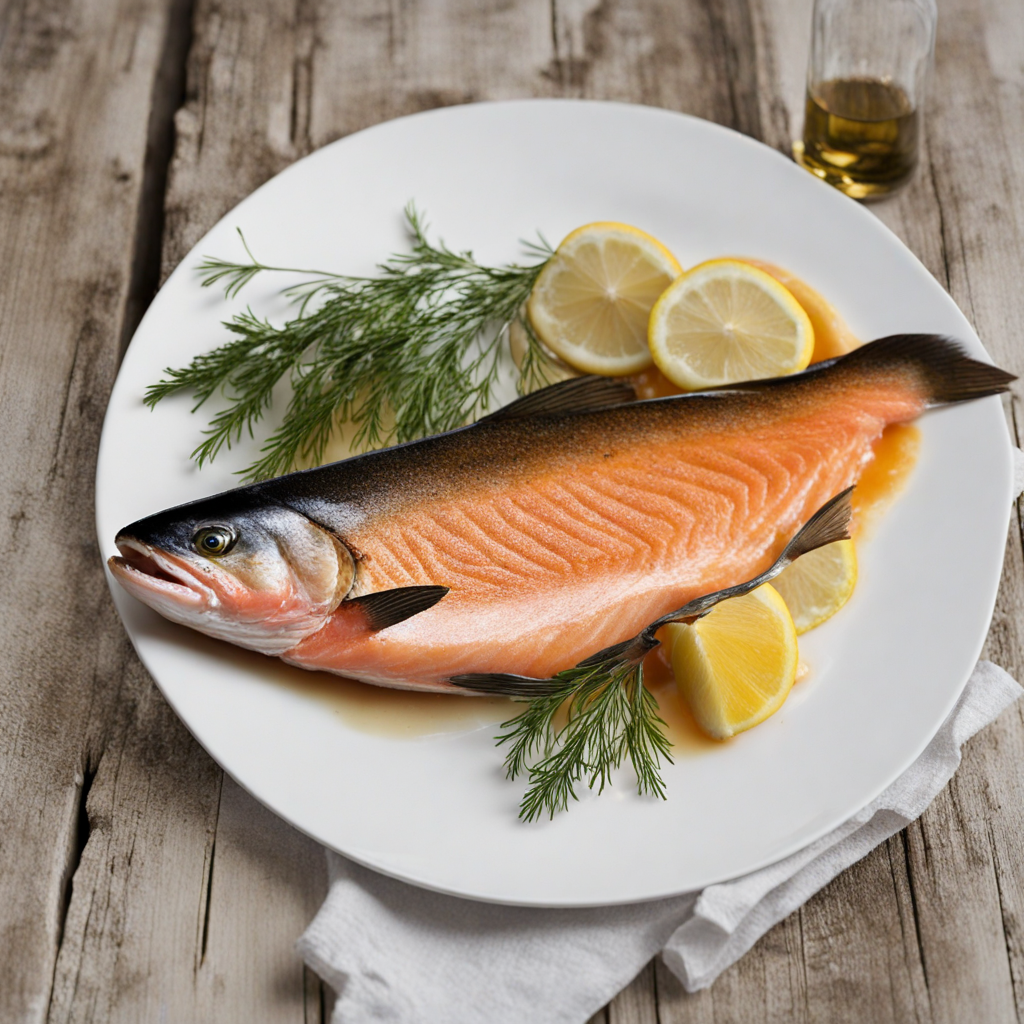Swedish Sandwich Cake
Swedish Sandwich Cake, or "Smörgåstårta," is a savory cake that beautifully merges the concept of a traditional sandwich with the presentation of a cake. Typically served at celebrations such as birthdays, weddings, or holiday gatherings, this dish boasts multiple layers of bread filled with an array of ingredients. The bread is often a light rye or white loaf, which serves as the base, and is generously layered with creamy fillings like mayonnaise, cream cheese, or sour cream, combined with flavorful elements such as smoked salmon, shrimp, or various cold cuts. The fillings can also include vegetables like cucumbers, radishes, and avocados, making each slice a delightful surprise of flavors and textures. The cake is adorned with an artistic flair, featuring a colorful array of toppings that might include sliced hard-boiled eggs, dill, fresh herbs, or even edible flowers. This vibrant presentation not only makes it visually appealing but also invites diners to enjoy the medley of tastes that each layer offers. The combination of creamy, savory fillings with the crunch of fresh vegetables creates a satisfying balance, making every bite an experience to savor. It’s a dish that reflects the Swedish love for fresh, quality ingredients and creative culinary artistry. What sets Swedish Sandwich Cake apart is its versatility; it can be tailored to suit various dietary preferences and flavor profiles. For those looking for a vegetarian option, fillings can be crafted from a mix of cheeses, roasted vegetables, and spreads like avocado or hummus. Additionally, seafood lovers might enjoy versions loaded with prawns, crab, or herring, all complemented by a zesty lemon or dill sauce. This cake is not only a feast for the palate but also a stunning centerpiece for any gathering, inviting everyone to partake in a delightful and unique culinary adventure.
How It Became This Dish
The History of Smörgåstårta: Sweden's Delectable Sandwich Cake #### Origins and Early Development Smörgåstårta, often referred to as the "sandwich cake," is a distinctive and beloved dish in Swedish cuisine. Its name stems from the Swedish words "smörgås" (sandwich) and "tårta" (cake), illustrating its unique nature as a savory cake rather than a traditional sweet dessert. This culinary creation has roots that trace back to the late 19th century, a period marked by significant changes in Swedish society, including urbanization and increased food availability. The origins of Smörgåstårta can largely be attributed to the influence of traditional Scandinavian open-faced sandwiches known as "smörgås." These sandwiches, typically made with a variety of toppings such as cured meats, fish, vegetables, and spreads, were a staple of Swedish meals. As culinary creativity flourished, particularly among the rising middle class, the concept of stacking these ingredients into a layered cake began to emerge. The first recorded instances of Smörgåstårta appeared in cookbooks in the early 20th century. The dish was particularly popularized in the 1930s, coinciding with a growing trend for more elaborate and visually appealing presentations in Swedish cuisine. Home cooks and chefs began experimenting with different fillings, flavors, and decorative elements, paving the way for the modern Smörgåstårta we know today. #### Cultural Significance Smörgåstårta is much more than just a dish; it represents a significant aspect of Swedish culture and social life. Traditionally served during celebrations, family gatherings, and holidays, this sandwich cake has a place of honor at events such as birthdays, weddings, and funerals. Its layered construction makes it an ideal centerpiece for buffets, appealing to both the eye and the palate. In Sweden, food is often a reflection of social status and community ties. Smörgåstårta, with its elaborate presentation and diverse ingredients, serves as a symbol of hospitality and generosity. Its preparation is often a communal activity, with family members or friends coming together to create a masterpiece. This collaborative aspect further cements its status as a dish that fosters connection and celebration. Additionally, Smörgåstårta embodies the Swedish concept of "lagom," which translates to "just the right amount." This philosophy emphasizes balance and moderation, which is echoed in the dish's harmonious layers of flavors and textures. The careful selection of ingredients, ranging from seafood to fresh vegetables and creamy spreads, showcases the Swedish commitment to using high-quality, locally sourced products. #### Evolution and Modern Variations As Sweden evolved through the 20th century, so did Smörgåstårta. The post-war period saw an explosion of creativity in Swedish cooking, influenced by international culinary trends. Chefs and home cooks began to experiment with different ingredients, leading to a diversification of Smörgåstårta recipes. While traditional versions often featured fillings like shrimp, smoked salmon, and liver pâté, modern variations incorporate a wider array of flavors, including vegetarian and vegan options. The dish's adaptability is a key feature of its ongoing popularity. Smörgåstårta can now be customized to suit various dietary preferences and occasions. For instance, a vegetarian Smörgåstårta may include layers of roasted vegetables, creamy avocado, and herbed cheeses, while a gluten-free version might use alternative bread or bases. This versatility ensures that Smörgåstårta remains relevant in contemporary Swedish cuisine. In the age of social media, Smörgåstårta has experienced a renaissance, with numerous food bloggers and chefs sharing visually stunning creations online. The dish's aesthetic appeal makes it a popular subject for photography, encouraging home cooks to showcase their own interpretations. This has led to a resurgence of interest, as younger generations discover the joys of making and sharing Smörgåstårta. #### Recipes and Regional Variations There is no single "authentic" recipe for Smörgåstårta, as regional variations and personal preferences play significant roles in its preparation. Typically, the cake is constructed from layers of bread, often rye or white, interspersed with fillings such as cream cheese, mayonnaise, and various toppings. Common ingredients include: - Fish and Seafood: Shrimp, smoked salmon, and herring are beloved choices, reflecting Sweden's coastal geography and fishing heritage. - Meats: Cold cuts, such as roast beef or ham, are frequently used, often accompanied by pickles or relishes. - Vegetables: A variety of fresh and pickled vegetables, such as tomatoes, cucumbers, and radishes, add color and crunch. - Spreads and Sauces: Creamy spreads like dill sauce, horseradish, or aioli are commonly used to bind the layers together. The cake is typically adorned with garnishes, including fresh herbs, edible flowers, and decorative elements like lemon slices or boiled eggs, enhancing its visual appeal. #### Conclusion Smörgåstårta is a culinary masterpiece that encapsulates the essence of Swedish culture—a harmonious blend of tradition, creativity, and community spirit. From its origins as an innovative way to present sandwich ingredients to its current status as a beloved celebratory dish, Smörgåstårta has evolved while remaining rooted in its cultural significance. As it continues to adapt to modern tastes and dietary needs, Smörgåstårta stands as a testament to the enduring nature of culinary traditions. It invites participation and creativity, making it a cherished dish for generations of Swedes. Whether enjoyed at a festive gathering or a quiet family meal, Smörgåstårta is more than just a sandwich cake; it is a celebration of Swedish heritage and the joy of shared experiences around the table.
You may like
Discover local flavors from Sweden


